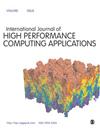通过机器学习为GPU选择最佳SpMV实现
IF 2.5
3区 计算机科学
Q2 COMPUTER SCIENCE, HARDWARE & ARCHITECTURE
International Journal of High Performance Computing Applications
Pub Date : 2021-05-01
DOI:10.1177/1094342021990738
引用次数: 7
摘要
十多年来,与开发用于稀疏矩阵向量积(SpMV)的高效GPU例程相关的研究已经导致了几种实现,每种实现都有自己的优势和劣势。在这项工作中,我们回顾了该主题上一些最相关的工作,评估了使用来自不同应用程序的3000多个矩阵公开可用的一些突出例程,并应用机器学习技术来预测在给定的并行平台上,哪个SpMV实现对每个稀疏矩阵表现最好。我们的数值实验证实,这些方法根据矩阵结构提供了各种各样的行为,因此,尽管可以定义一些有用的策略(启发式),但识别为给定矩阵选择最优方法的一般规则变得极其困难。使用机器学习方法,我们证明了可以获得低成本的分类器,该分类器以超过80%的准确率预测给定稀疏矩阵的最佳方法,证明了该方法可以显著减少执行时间和能耗。本文章由计算机程序翻译,如有差异,请以英文原文为准。
Selecting optimal SpMV realizations for GPUs via machine learning
More than 10 years of research related to the development of efficient GPU routines for the sparse matrix-vector product (SpMV) have led to several realizations, each with its own strengths and weaknesses. In this work, we review some of the most relevant efforts on the subject, evaluate a few prominent routines that are publicly available using more than 3000 matrices from different applications, and apply machine learning techniques to anticipate which SpMV realization will perform best for each sparse matrix on a given parallel platform. Our numerical experiments confirm the methods offer such varied behaviors depending on the matrix structure that the identification of general rules to select the optimal method for a given matrix becomes extremely difficult, though some useful strategies (heuristics) can be defined. Using a machine learning approach, we show that it is possible to obtain unexpensive classifiers that predict the best method for a given sparse matrix with over 80% accuracy, demonstrating that this approach can deliver important reductions in both execution time and energy consumption.
求助全文
通过发布文献求助,成功后即可免费获取论文全文。
去求助
来源期刊
CiteScore
6.10
自引率
6.50%
发文量
32
审稿时长
>12 weeks
期刊介绍:
With ever increasing pressure for health services in all countries to meet rising demands, improve their quality and efficiency, and to be more accountable; the need for rigorous research and policy analysis has never been greater. The Journal of Health Services Research & Policy presents the latest scientific research, insightful overviews and reflections on underlying issues, and innovative, thought provoking contributions from leading academics and policy-makers. It provides ideas and hope for solving dilemmas that confront all countries.

 求助内容:
求助内容: 应助结果提醒方式:
应助结果提醒方式:


